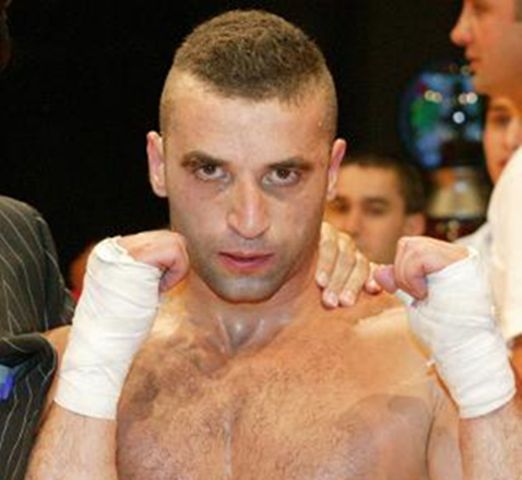
Operation Neath: Is Somalia’s al-Shabaab Movement Active in Australia?
Publication: Terrorism Monitor Volume: 9 Issue: 3
By:

“Islam is the true religion. Thank you very much.” So declared Wissam Mahmoud Fattal, a 34-year-old Lebanese Australian former kick-boxer after he was convicted of participating in a plot to attack the Holsworthy Army base just outside Sydney (The Age [Melbourne], December 23, 2010; Australian Associated Press, December 23, 2010). The statement stood in contrast to Fattal’s earlier comments following his arrest when he shouted at the court, “Your army kills innocent people in Afghanistan and Iraq. You call us terrorists – that’s not true” (Daily Telegraph, August 5, 2009).
Fattal’s statement came at the conclusion of a lengthy trial that began after the August 2009 arrests and raids of 19 properties that concluded Operation Neath, one of Australia’s most substantial terrorism investigations to date (see Terrorism Monitor, September 10, 2009). Convicted alongside Fattal were Saney Edow Aweys, 27, and Nayef el-Sayed, 26, Somali and Lebanese naturalized Australians, respectively. Cleared of charges related to the plot were Yacqub Khayre, 23, and Abdirahman Ahmed, 26, both Somali-Australians.
Prosecutors alleged that the men were in the process of planning a fidayin or suicide-style attack on the Australian army base, in which they would use automatic weapons to wreak havoc until they were brought down. In a recorded conversation between Saney Aweys and a cleric in Somalia, Aweys outlined the plotters’ intention of attacking a barracks; “There are about six guys…20 minutes will be enough for us to take out five, six, ten…I don’t know. Until they will use up their weapons” (The Age, December 23, 2010).
Much of the media attention around the plot focused on the cell’s apparent connection to al-Shabaab militants in Somalia. Three of the men charged were of Somali descent and it was alleged that the group had sought to obtain a fatwa from clerics in Somalia to justify their actions. Furthermore, the case uncovered a network that was apparently responsible for funneling fighters and funding to the Somali extremist group.
At the center of the plot was Saney Aweys, a Somali refugee who retained a strong connection to his native land and the conflict it currently endures. In an attempt to deflect attention from his client Fattal, lawyer Patrick Tehan pointed an accusing finger at Aweys, declaring his “tentacles seem to be all over the place…he seems to be up to all sorts of activities” (The Age, December 24, 2010). Using seven different mobile phones registered under a variety of names, Aweys was the one who provided contacts with al-Shabaab networks in Somalia. It was apparently a phone call between Fattal and Aweys which first alerted Australian authorities to the danger posed by the cell (Australian, August 4, 2009). Fattal had expressed to an undercover officer his desire to achieve martyrdom fighting abroad in Somalia, which he described as the “true jihad.” Fattal, however, was unable to travel due to visa problems (Australian, September 23, 2010).
Early on in the case, Aweys was accused of facilitating the travel to Somalia of other Australian Somali’s, including the missing Walid Osman Mohamed (believed to be in Somalia) and fellow defendant Yacqub Khayre, as well as sending money to the group. However, a decision not to prosecute was made on the grounds that the amounts were small and that al-Shabaab was not proscribed in Australia at the time (Australian, August 6, 2009). It is also possible that he was in contact with missing Australian-Somali suspect Hussein Hashi Farah, a man described in the press as the “mastermind” of the plot, who was last seen when he escaped from Kenyan custody after being picked up as he attempted to cross the Ugandan-Kenyan border (AAP, March 23, 2010; AAP, June 28, 2010).
Aweys was the key figure in seeking a fatwa from shaykhs abroad to condone their intended actions in Australia. As well as being in direct contact with Shaykh Hayakallah in Somalia, he also dispatched Yacqub Khayre, a young Somali-Australian and former drug addict he had taken under his wing, to Somalia to obtain the fatwa and (allegedly) to train with al-Shabaab. Khayre was something of an unreliable recruit, regularly fleeing from the camp and was described in an intercept between Somalia and Aweys as “a risk to you, us and the whole thing” (Australian, September 16, 2010). Khayre’s defense successfully argued that the fatwa Khayre sought when he went to Somalia in April 2009 was merely to condone the conduct of fraud in obtaining money to support al-Shabaab (The Age, December 24, 2010).
These connections aside, it does not seem as though al-Shabaab was directly responsible for tasking the men to carry out jihad in Australia. Shortly after the initial arrests, al-Shabaab spokesman Shaykh Ali Mahmud Raage (a.k.a. Shaykh Ali Dheere) issued a statement dismissing reports that the detainees were in any way members of al-Shabaab, claiming the men were arrested solely because they were Muslims (Dayniile, August 6). While it seems clear that Australian police have disrupted a network providing support for al-Shabaab from their nation, it is not clear that this plot was indeed the beginning of a shift in the group’s profile. This is somewhat tangential, however, from the perspective of Western security services, as what the case does highlight is that networks providing support for terrorist groups abroad can pose a potential threat at home. Described repeatedly as the key figure in the plot, the narrative painted by the prosecution was that Fattal had decided to turn his attention to Australia after having been thwarted in his attempts to conduct jihad abroad. He then used his connections to a network sending fighters and money to Somalia to turn those dreams into action, highlighting the very real risk that fundraising networks can pose for their host nations. The men are to be officially sentenced later this month and are likely to receive heavy terms.




